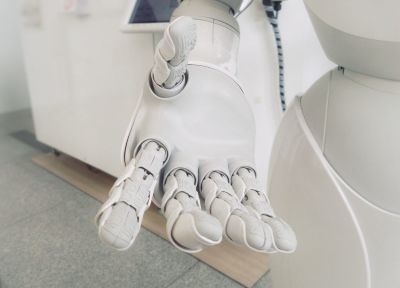Abortion and ‘sentient’ AI: A surprising juxtaposition

Among the dominant news stories last week was the United States Supreme Court’s overturning of Roe v. Wade, impacting U.S. abortion policy, and another story reporting the claims of a former Google engineer that a machine on which he had been working seemed to be showing some attributes of personhood.
Both the big news items converged at the point of a strategic question: What is human life?
A large segment of the abortion industry says a fetus is not fully human, and therefore may be subject to removal from the womb and the extinguishing of its life through abortion.
The computer world catches a slight sniff of humanity in a machine and does all possible to keep the contraption alive.
What an odd juxtaposition.
A major reason for inadequate answers to the question, “What is a human?” is the narrow focus of secularists when it comes to defining life.
The Bible reveals the wider and deeper view that humans are Imago Dei, made in the image of God. Among other things, this means the human is triune. God is the Triunity of Father, Son, and Holy Spirit. The authentic human being is a triunity of spirit, soul, and body.
The Bible’s revelation of genuine humanity is modeled in important symbols of His interactions with humans. The Jerusalem Temple, for example, was constructed with three parts — the Outer Court, the Inner Court, and the Holy Place. Students of Scripture across history have noted these sections in God’s design of the human: The body is the “outer court,” the soul, the “inner court,” and the spirit, the “holy place.”
The Bible shows that the human spirit is the point of contact and interaction with God’s Holy Spirit, the soul, the seat of mind, emotion, and volition, or will, the body, the means of working out and implementing in the external world the impulse of the Spirit, the dreams and aspirations of the soul, all expressed through the physical capacities.
“Spirit” is from the Greek word, pneuma, from which we derive “pneumatic,” and the idea of energy. “Soul,” in the Greek New Testament, is psuche, giving the English language, “psyche,” “psychology,” and related terms.
The machine is given these capacities only as wired-in constructs. They are functional, not ontological, given by finite people rather than the all-transcending God Who alone can give authentic spirit and soul.
For the abortionist to infer that the fetus is not human because it falls short of these attributes, or the computer designer and programmer to conclude that the machine is “sentient” because it seems to display some attributes of humanity leads, on both sides, to a tragic misunderstanding, resulting in spiritual and intellectual chaos and contradictions of our age.
In their effort to humanize the machine, programmers and designers seek to give the device the very things that the Bible shows constitute the true human. The CPU, the Central Processing Unit, might fill the role of “soul.” The casing that houses the CPU and its parts serves as the “body.” But where in the machine is the “spirit”? Perhaps it is in the depths of the machine that can receive the programs and directions of the human engineer. These would include the worldview and sets of values that the programmer designs into the machine, and that will determine the boundaries of its actions.
Back to abortion: The removal of the fetus and the ending of its life is a drastic action. If it is regarded as a human being, then abortion is seen by many as murder. Therefore, the baby must not be seen as truly human, but regarded as, at best, a proto-human, or potential human.
But just as a computer programmer cannot put true spirit, soul, and body in the machine, so the abortionist cannot remove it from what he or she regards as a cacophony of cells or “merely” a fetus.
The most serious factor in this juxtaposition is that both the abortionist and programmer are, in a sense, trying to play God.
Pulitzer prize-winner Tracy Kidder explored the issues in his book, The Soul of a New Machine.[1]There he wrote about the headiness of an imaginary computer designer: “That was what made it fun; he could touch the machine and make it obey him. I’d run a little program, and when it worked, I’d get a little high, and then I’d do another, it was neat. I loved writing programs. I could control the machine. I could make it express my own thoughts. It was the expansion of the mind to have a computer.”
What is a human? Is one of the most important questions of our time. The programmer cannot give the machine the divine attributes of Imago Dei, and the abortionist cannot take them away from the baby in the womb.
[1] Avon Books, 1986.
Wallace B. Henley is a former pastor, daily newspaper editor, White House and Congressional aide. He served 18 years as a teaching pastor at Houston's Second Baptist Church. Henley is author or co-author of more than 25 books, including God and Churchill, co-authored with Sir Winston Churchill's great grandson, Jonathan Sandys. Henley's latest book is Who will rule the coming 'gods'? The looming spiritual crisis of artificial intelligence.





















